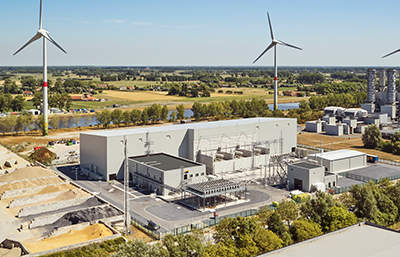Siemens has completed connecting a 140km long high voltage direct current (HVDC) transmission line, called Nemo Link interconnector, between Belgium and the UK.

Image: Siemens built two converter stations as part of the Nemo Link project. Photo: courtesy of Siemens AG.
The Nemo Link transmission project is a joint venture between Belgian transmission system operator Elia and the UK’s National Grid.
The transmission line, which is a combination of subsea and underground cables, connects the Belgian and the British power grids. It enables transmission of electricity up to 1,000MW between Belgium and the UK.
A test phase for Nemo Link will be initiated shortly, which includes energy exchanges, to make sure that everything is working properly. The test phase will mark the final stage of the transmission project prior to the start of its commercial operation in the first quarter of 2019.
Siemens Energy Management Division CEO Ralf Christian said: “The collaboration between Elia, National Grid, Siemens and our partners has delivered an exemplar project, on time, on budget and with outstanding safety.”
The Nemo Link runs between Richborough on the Kent coast in the UK and Herdersbrug, near Zeebrugge in Belgium. It will transmit enough electricity to meet the power consumption needs of around 500,000 homes.
National Grid CEO John Pettigrew said: “Nemo Link will bring great benefits to consumers in both the UK and Belgium by offering both countries access to a broader energy mix and providing opportunities to expand into other electricity markets.
“Over the next five years National Grid will be investing more than £2 billion in new interconnectors to Europe and this significant commitment is driven by the value and benefits that interconnectors like Nemo Link deliver to customers.”
According to Siemens, Nemo Link will boost the security of supply for the two countries by facilitating the import and export of electricity, and also supporting the integration of renewable energy in the power grid.
In June 2015, Siemens and J-Power Systems were given contracts totaling €500m to construct the transmission line.
Siemens supplied its HVDC Plus technology for the power transmission and also handled the construction of converter stations in Kent and Zeebrugge.
The company said that in the first converter station, the alternating current (AC) is converted into direct current (DC), which is transmitted through cable to the second converter station on the other side of the transmission link, where it is changed into AC.
J-Power, a subsidiary of Sumitomo Electric Industries, designed, fabricated and installed the HVDC XLPE cable system.
